General Information
Figure 1 shows a pedestrian beam bridge.
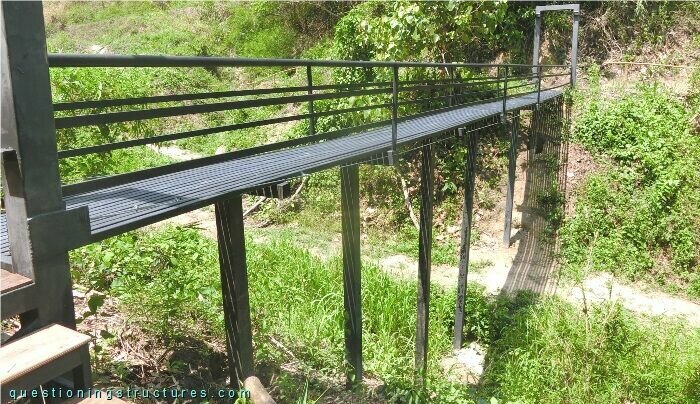
| Main span | ≅ 3 m |
| Girder | Steel square hollow section |
Structural Concept
Figure 2 shows a lateral view of the bridge.
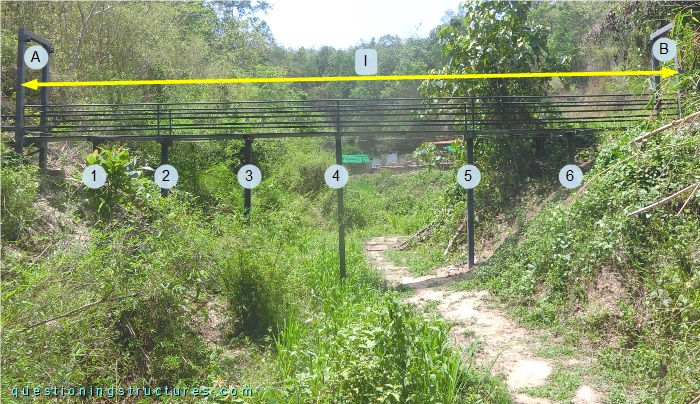
Over a total bridge length (l) of about 16.5 m are installed six single-column piers (1 to 6), and each bridge entrance has a portal frame (A and B). Figure 3 shows the bridge viewed from the deck.
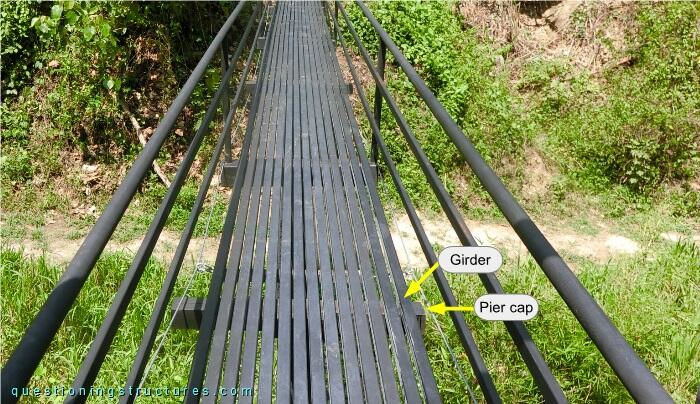
There are fourteen girders; they are connected directly (by welding) to the pier caps and are of type continuous. A girder has a side length of about 5 cm, and no deck is installed. The piers are made of rectangular hollow sections and are connected directly (by welding) to the pier caps, which are made of three side-by-side placed rectangular hollow sections or square hollow sections, as shown in figures 4 and 5, respectively.
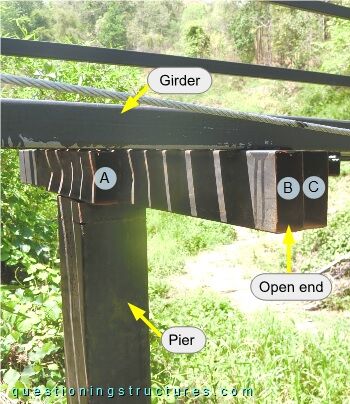
Section A is shorter and placed differently compared to sections B and C; all sections have open ends.
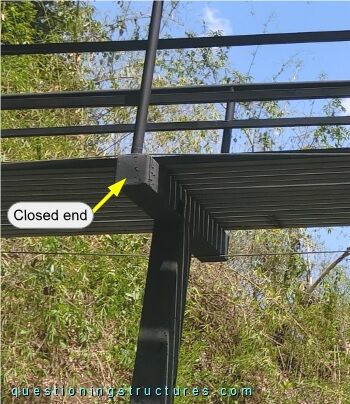
The ends of the pier cap are closed. Figure 6 shows a schematic three-dimensional view of the bridge.
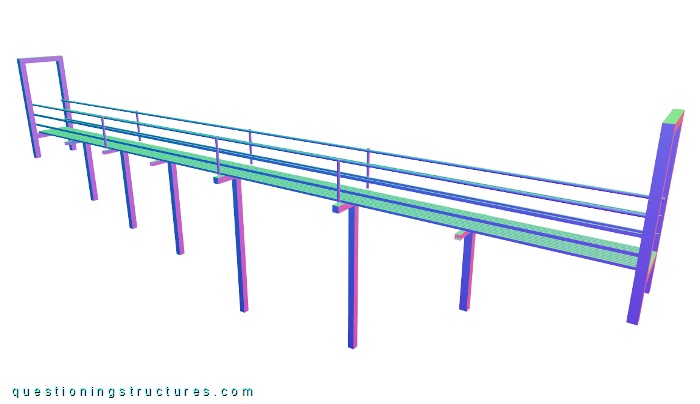
Do the open ends affect the structural behavior and/or durability of the pier cap sections?
What is the purpose of the portal frames?